
The volume of fisheries production during the second quarter of 2021 reached 1,149.35 thousand metric tons. It went down by -2.4 percent compared to its 1,177.21 thousand metric tons output during the same quarter in 2020. Among the subsectors, commercial and marine municipal fisheries displayed reductions in production while inland and aquaculture reported increments. (Figure 1 and Table 1)
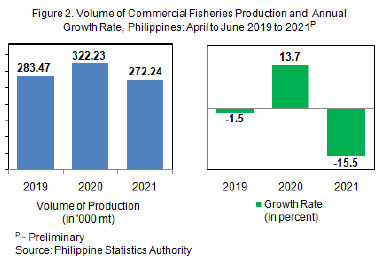
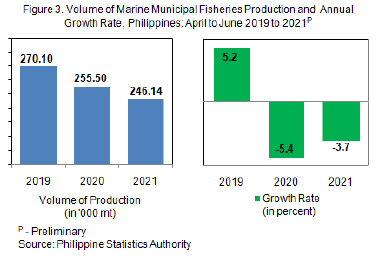
During the period, commercial fisheries volume of production was recorded at 272.24 thousand metric tons. It was lower by -15.5 percent than the previous year’s same quarter output of 322.23 thousand metric tons. The subsector comprised 23.7 percent of the total fisheries production. (Figure 2 and Table 1)
Marine municipal fisheries went down by -3.7 percent. Its volume of production was registered at 246.14 thousand metric tons from the 255.50 thousand metric tons mark during the same period in 2020. The subsector’s share to total fisheries output was 21.4 percent. (Figure 3 and Table 1)
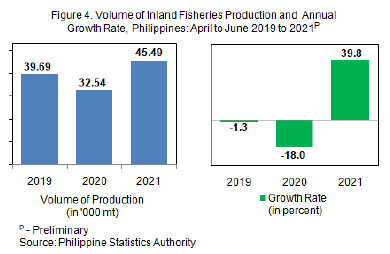
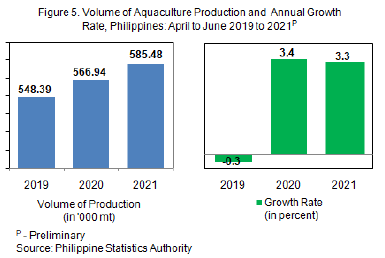
Around 45.49 thousand metric tons was produced from the Inland fisheries subsector. The volume was 39.8 percent higher than its 32.54 thousand metric tons level from April to June a year ago. It contributed 4.0 percent to total fisheries production. (Figure 4 and Table 1)
During the second quarter of 2021, the volume of harvests from aquaculture farms was 585.48 thousand metric tons while in the previous year’s second quarter, it registered 566.94 thousand metric tons. The subsector showed an increment of 3.3 percent. Of all the fisheries subsector, aquaculture constituted the biggest share of 50.9 percent to total fisheries output. (Figure 5 and Table 1)
Of the 20 major species, double-digit production reductions were noted in yellowfin tuna (tambakol/ bariles, -34.9%), roundscad (galunggong, -18.3%), threadfin bream (bisugo, -17.1%), frigate tuna (tulingan, -16.9%), fimbriated sardines (tunsoy, -13.7%), and skipjack (gulyasan, -12.0%). (Table 2)
On the contrary, significant improvements were observed in blue crab (alimasag, 24.2%), tilapia (14.3%), mudcrab (alimango, 13.4%), and milkfish (bangus, 12.6%). (Table 2)
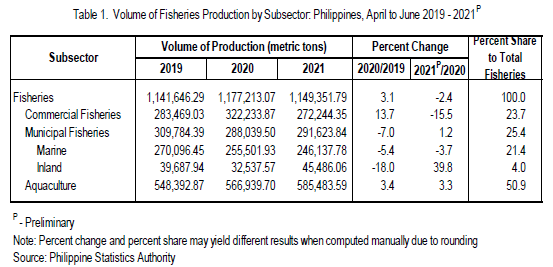
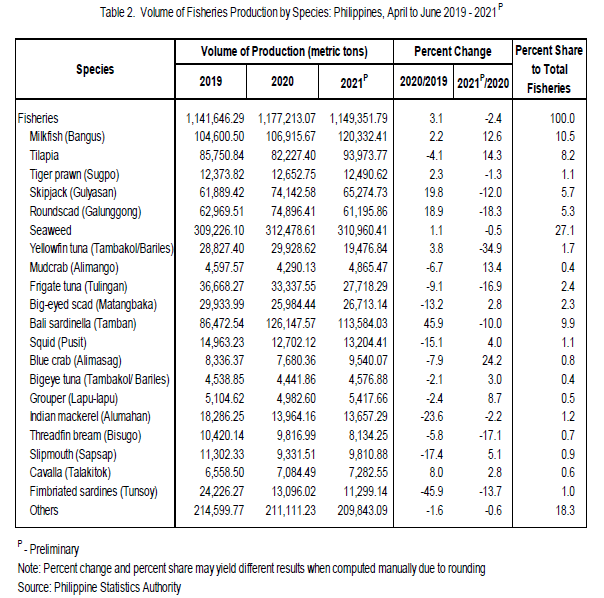

DENNIS S. MAPA, Ph.D.
Undersecretary
National Statistician and Civil Registrar General
